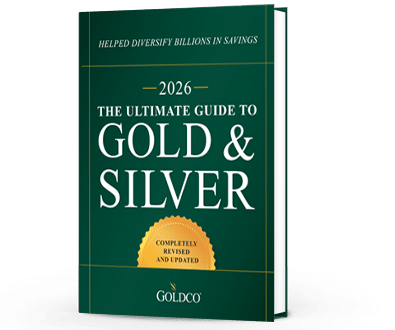6 Indicators of a Potential Recession
It seems that in the media today there are more and more mentions of the dreaded R-word: recession With growing economic uncertainty, the threat of potential recession seems to be growing as...
Economy

You might be forgiven for thinking that the US economy is still strong and in great shape, particularly if you look at stock markets. With stock markets having set dozens of record highs this year, it’s no wonder that many investors are bullish. But behind that facade of economic growth lies a grim reality: the US economy could be on the verge of a major collapse.
Part of the problem lies with the fact that there’s a growing divergence between the haves and the have-nots. The haves, the 1%, Wall Street financiers, and Washington politicos, are doing just as well as they ever have, if not better. Meanwhile, Main Street is suffering, and no one seems to care.
The fact is that the US economy is facing major economic headwinds, and the potential for a recession that could make 2008 look like nothing. And there are at least five major reasons why.
After the lockdown-induced recession of 2020, it was only natural that the economy would bounce back once restrictions were lifted. But now that growth has returned to mostly normal, the economy is having real difficulty in actually growing.
We’re still below trend, and all indications are that that won’t change anytime soon. Expectations for future growth are also trending downward, with both households and businesses pessimistic about the future.
Have you seen meat prices recently? It seems like all of a sudden the prices of beef and pork have skyrocketed in stores. Beef chuck roast has about doubled since the beginning of the year, and the situation is so bad that the White House is now starting to comment on it.
Housing prices are similarly out of control, and those make up a significant portion of official inflation figures. It’s not wonder, then, that inflation figures are rising higher than we’ve seen in decades. Unfortunately, the underlying causes of those rising prices don’t look they’ll abate anytime soon. So if you’re hoping for a little relief at the grocery store, don’t hold your breath.
Over 11 million Americans are still on the unemployment rolls, a massive number. Even as enhanced unemployment benefits expire, many are not expecting that number to decline. It really appears that we’re on the verge of a decade of stagflation, one that could rival the 1970s. High inflation, high unemployment, and weak economic growth could render the 2020s a decade that we’d rather all forget.
One of the interesting paradoxes of the recent economic weakness is that, despite the fact that over 11 million Americans are out of work, there are over 12 million job openings, and they keep rising all the time. You would think that some of those Americans would take advantage of the job opportunities out there, but you’d be wrong. The number of unemployed remains high, while job openings keep rising.
Without the workers they need, many companies are faced with having to cut back on production, which contributes to rising prices of consumer goods. Many employers are finally getting wise to the fact that they have to raise wages and benefits to attract labor, but even still they are having difficulty finding enough workers. If this continues into next year, it could cause havoc.
If you’ve been in the market for consumer goods, particularly appliances like refrigerators, washers and dryers, or other electronics, you’ve probably noticed that there are severe shortages throughout the market. Numerous items are on backorder, due to shortages of metal and raw materials, electronic chips, or labor.
The economy had run on a just in time system for years, with just enough inventory being held in stock until it needed to be replenished. That works well during normal times, but these are not normal times.
As a result, supply chains throughout the world are having to readjust to the new normal. Rather than keeping a few days or weeks of parts on hand, some companies are putting in orders for months or even years worth of parts. That increased demand has helped contribute to both shortages and rising prices, as companies are falling all over themselves trying to keep their operations going.
There is no indication that any of these disruptions will improve anytime soon. As businesses know all too well, shutting down fully for any length of time can often lead to severe disruptions when starting up again. And with thousands of businesses all in the same boat, fighting over the same scarce resources, it could be years before the economy returns to any semblance of normal.
All of this is to say that we’re living in very interesting times, and we’re possibly on the verge of an economic crisis that only occurs every several generations. We’re almost 100 years away from the anniversary of the Great Depression, and some might argue that we’re actually overdue for another depression.
Many investors have assessed the outlook for the economy and have decided that they would rather reduce their risk than remain overextended in an economy that is running out of steam. Many have already taken steps to protect their wealth and their assets. And many have chose precious metals like gold and silver for that protection.
Gold and silver have served as protective assets for centuries, helping protect wealth through both good times and bad. And their record over the past several decades has been pretty good. Overall growth in the gold price has been roughly the same as stock market growth since 1971, and gold’s performance over the past 20 years has far exceeded that of stocks.
Both gold and silver averaged 30% annualized growth throughout the stagflation of the 1970s, a tremendous achievement given the difficulties facing the economy back then. If the 2020s end up being a repeat of the 1970s, could gold and silver see similar performance this decade?
Last year certainly saw a good start, with gold up about 25% and silver close to 50%. Continued growth like that over the course of the decade could make precious metals investors very happy.
But it’s important to remember that precious metals are a long-term investment, not a get rich quick scheme. If you’re thinking about gold and silver as a short-term means of striking it rich, you may or may not get lucky. But if you’re looking at gold and silver as long-term investments to protect your wealth, grow your assets in retirement, and hedge against inflation and economic calamity, then gold and silver may just be your ticket.
Give the precious metals experts at Goldco a call today to learn more about how gold and silver can help protect your investment portfolio. With over a decade of experience helping thousands of customers just like you protect their wealth, Goldco’s experts can help you navigate the world of precious metals.
With the economy poised to make a major downturn, can you afford to put off protecting your assets any further? Call Goldco today and put yourself on the path to protecting your savings.

